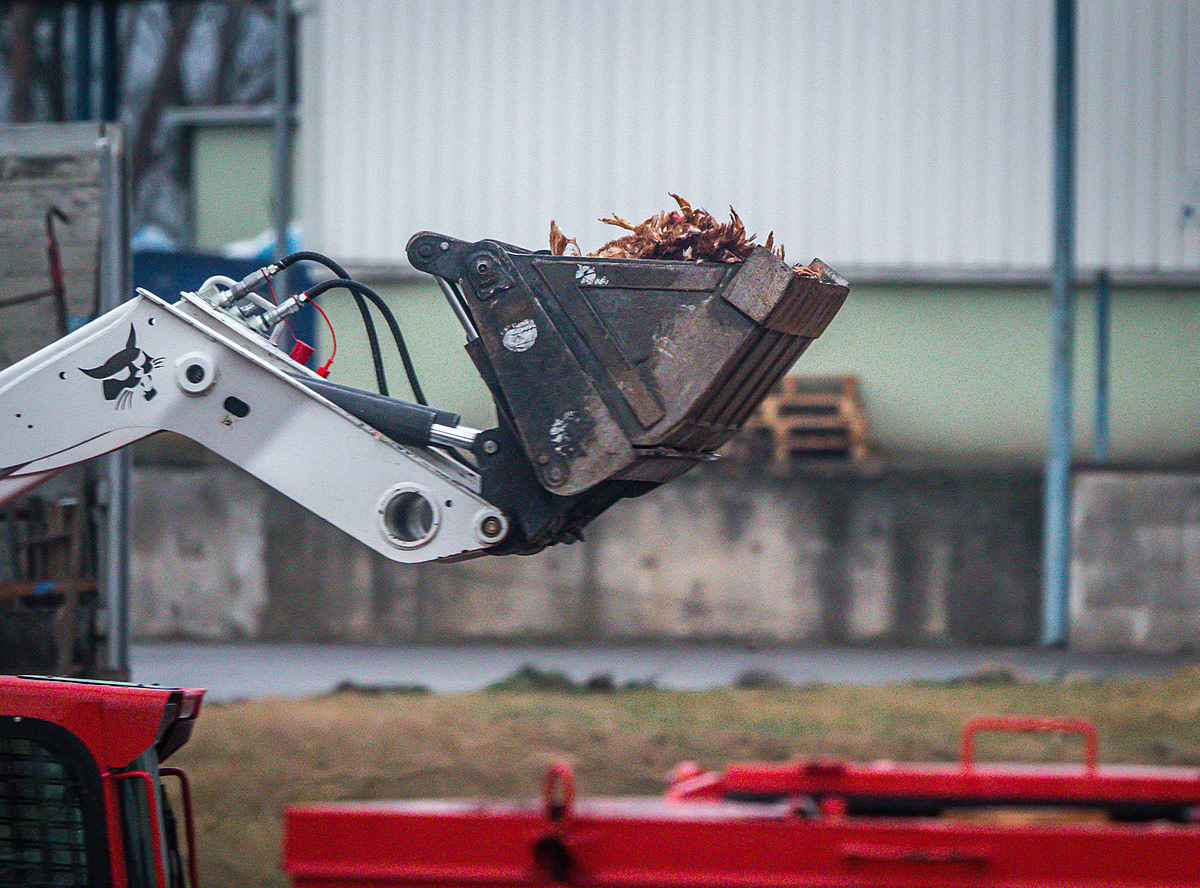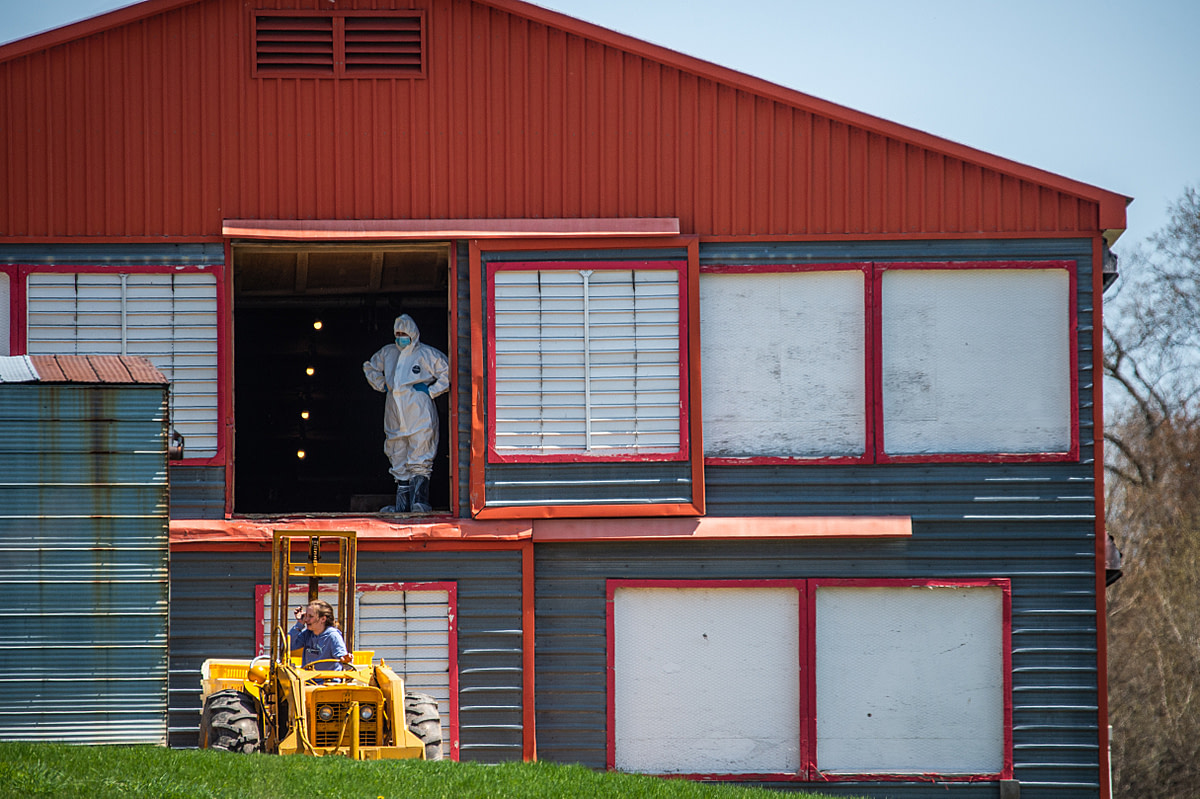Assignment: Bird Flu (H5N1) Spreads Across the US, Canada and Europe
Videographer: Direct Action Everywhere (DxE)
Author: We Animals Media
“I’ve gone out around southern Ontario a number of times now, following the growing number of H5N1 control zones listed on the Canadian Food Inspection Agency’s website. In those areas, I talk with people to get a sense of what they are feeling about the situation, their concerns, or lack thereof. I shoot from the road, or with permission.” ― Jo-Anne McArthur, We Animals Media Founder & animal photojournalist
What Is Bird Flu?
When the virus is detected in farm flocks, the farms are deemed a biosecurity hazard and so the birds are often killed, or “depopulated” in industry terms. Depending on the country, the means of ending the birds’ lives are by live burial, CO2 poisoning, ventilation shutdown, or through the use of firefighting foam which asphyxiates the birds.
How Does Ventilation Shutdown Work?
“These are birds in extreme distress. They are literally fighting for their lives, they’re gasping for air, they’re struggling. The videos don’t have any audio, but these birds look like they’re vocalizing to me. I think they were probably crying out. In the global scientific community, it’s generally accepted that, if one could assume that a procedure would cause pain or distress to a human, you can also assume it would do the same for an animal.” ― Sherstin Rosenberg, veterinarian for Happy Hen animal sanctuary
How Many Birds Have Died From The North America Outbreak?
Most recently in Canada, after an outbreak at three of its facilities, Brome Lake Ducks killed 200,000 ducks using carbon dioxide gas and was ordered to destroy 400,000 duck eggs by the CFIA. The company is Canada’s largest producer of Pekin ducks with 13 sites across Quebec.
“When I saw dumpsters covered in feathers a few hundred yards from a massive duck farm, I knew it would be bad. Then we got closer and saw a severed leg on top. When we opened the lid, it was a horror show: hundreds of mutilated ducks, discarded as waste. Their faces stay with me long after I leave the scene. I don’t want to put them out of my mind because I may be the only person who ever saw them as individuals who wanted to live – and I think it’s important for someone to acknowledge that.” ― Victoria de Martigny, animal photojournalist
“King Cole Ducks, a company that grows hundreds of thousands of ducks each year, shooed me away when I pulled up to ask what was happening at their building on Warden Ave that day. Several people were getting geared up in Hazmat suits. Before I left, the CFIA agent, leaning on our car window with a look of sleep deprivation and stress, offered this: ‘It’s getting worse.’ And it has. Nearby I photographed a backyard flock of one hundred gorgeous, curious hens. I asked the farmer what he would do if H5N1 hit his flock. ‘I’ll follow the regulations and destroy them. It’s okay. They essentially pay for themselves with the eggs they lay. I’ll just go a while without hens and then replace them when we are allowed.’ ” ― Jo-Anne McArthur
Video footage by Direct Action Everywhere (DxE).
More like this from We Animals Media:
Investigation: Duck Egg Farming – Indonesia, 2021
by We Animals Media | Dec 22, 2021
System Shutdowns and The Failures of Factory Farming
by Kelly Guerin | Jul 30, 2020
An Inside Look at Asian Wet Markets
by Kelly Guerin | Mar 19, 2020







